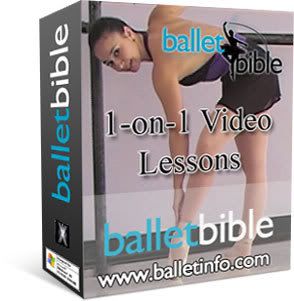Ballet Barre Stretching - Perfecting The Grace And Poise Of Ballet Dancing
If You Cant Learn Ballet Bible Dancing From These Simple Methods Then You Never Can…
Any ballet dancer can tell you that the term ?barre?, not only refers to the handrail that is used during their warm-ups, it also refers to the series of ballet stretching exercises that form the foundation of ballet dancing training for all levels.
The barre are simple exercises focused on building grace, and poise necessary for dancing. Barre exercises are repeated in a slow manner to gradually increase strength and teaches correct body placement at the same time.
Some basic movements in the barre routine would include: 1. Pli? ? These are the very first exercises done at the barre. This means ?to bend? in French. Exercises such as these are to develop balance. Dancers are to bend their knees while keeping their feet pointing outwards. The lower they bend, the more precarious, hence training their balance. It also keeps the joint and muscles elastic.
2. Tendus ? Dancers use this training to compel their instep in an outward direction. It also helps them to master the arches as it is focused on the movement of the ankles and feet, and training the muscles in the area.
3. Degage ? The degage is a continuation to the tendus. It also aids in ankle joint suppleness while targeting toe strength.
4. Frapp? ? A movement where the foot is elevated from a fixed position and then straightened. It trains dancers in strength and balance as they elevate their foot and in strengthening the instep.
5. Rond de Jambe ? This can refer to either (i) Rond de jambe a terre and (ii) Rond de jambe en l?air. Rond de jambe a terre bring the toe and heel into line, and perfects the balance of a ballet dancer. Rond de jambe en l?air relaxes the joints of the hips and turn the legs outwards, preparing the dancer for other dance position.
6. Developpe ? The target areas are the muscles at the back, the legs and the abdomen. The dancer lifts the leg up, and maintains the elevated position in the air while extending the foreleg. This forces the dancer to try to maintain balance.
7. Fondu ? Dancers need to get used to jumping high up in the air, and these movements are designed to strengthen the leg muscles, by the slow bending of knees.
8. Grand battement ? This forms the last in the series of the barre and is performed after stretching exercises. The main focus is on the alignment of the legs and hips while dancers have to raise their leg as high as they possibly can and the supporting leg is supposed to remain straight.
The barre and the list of exercises are almost seen to be compulsory before any serious ballet lessons or practice commence. These ballet stretches can be used to help those who want to get back in shape for dancing after a period of convalescing from injuries, since the exercises are specific and targeted at the important joints and muscles needed in dance.
Moses Wright is the founder of Stretching Exercise. He provides more useful information on , Stretching Equipment and Sports Muscle Stretching on his website. Webmasters are welcome to reprint this article if you keep the content and live link intact.
Related Articles:-Labels: ballet_dance, ballet_dance_modern, ballet_dance_wear, ballet_dancer_dancing_fantastic_maid_nurse_roomie_super_tights_witch, ballet_dancing_line_time

